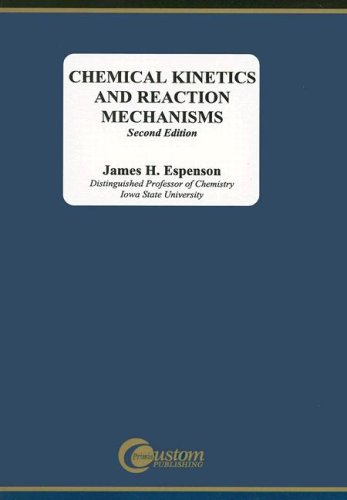Chemical kinetics and reaction mechanisms ebook download
Par riley virginia le mardi, mai 31 2016, 04:17 - Lien permanent
Chemical kinetics and reaction mechanisms. James H. Espenson

Chemical.kinetics.and.reaction.mechanisms.pdf
ISBN: 0070202605,9780070202603 | 296 pages | 8 Mb

Chemical kinetics and reaction mechanisms James H. Espenson
Publisher: McGraw-Hill Science/Engineering/Math
Reactions, and extensive study of kinetic micellar effects had to wait for instrumental development. For most students some of the most difficult problems in organic chemistry are those that deal with reaction mechanisms, which fall under the general heading of Chemical Kinetics. The topics covered include quantitative relationships between molecular structure and chemical activity, organic/inorganic chemistry, biochemical kinetics, surface kinetics and reaction mechanisms. The topic "Chemical kinetics" consists of reaction rate and reaction mechanism. What we discovered here is that tunneling can dominate a reaction mechanism sufficiently to redirect the outcome away from traditional kinetic control. It is generally true that the molecularity of the transition state can be determined from the form of the rate law. Thus, the form of the rate law predicts the first step of the reaction mechanism. The branch of physical chemistry which deals with the rate of reactions, their mechanism, conditions and the factors influencing the rate of reactions. Reaction rate is the speed with which a reaction takes place. The topic of chemical kinetics deals with the rate and mechanism of chemical reactions.
Becoming Batman: The Possibility of a Superhero pdf download